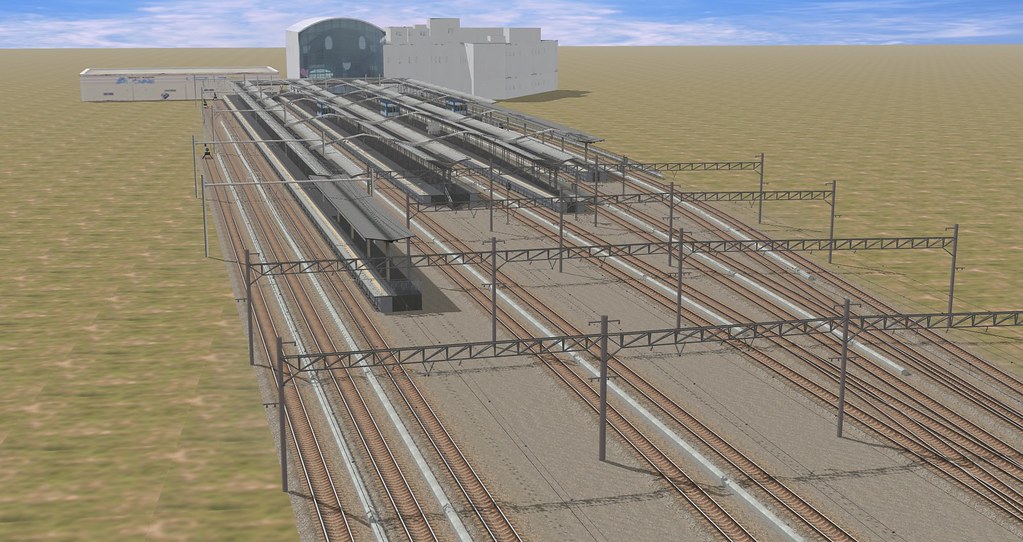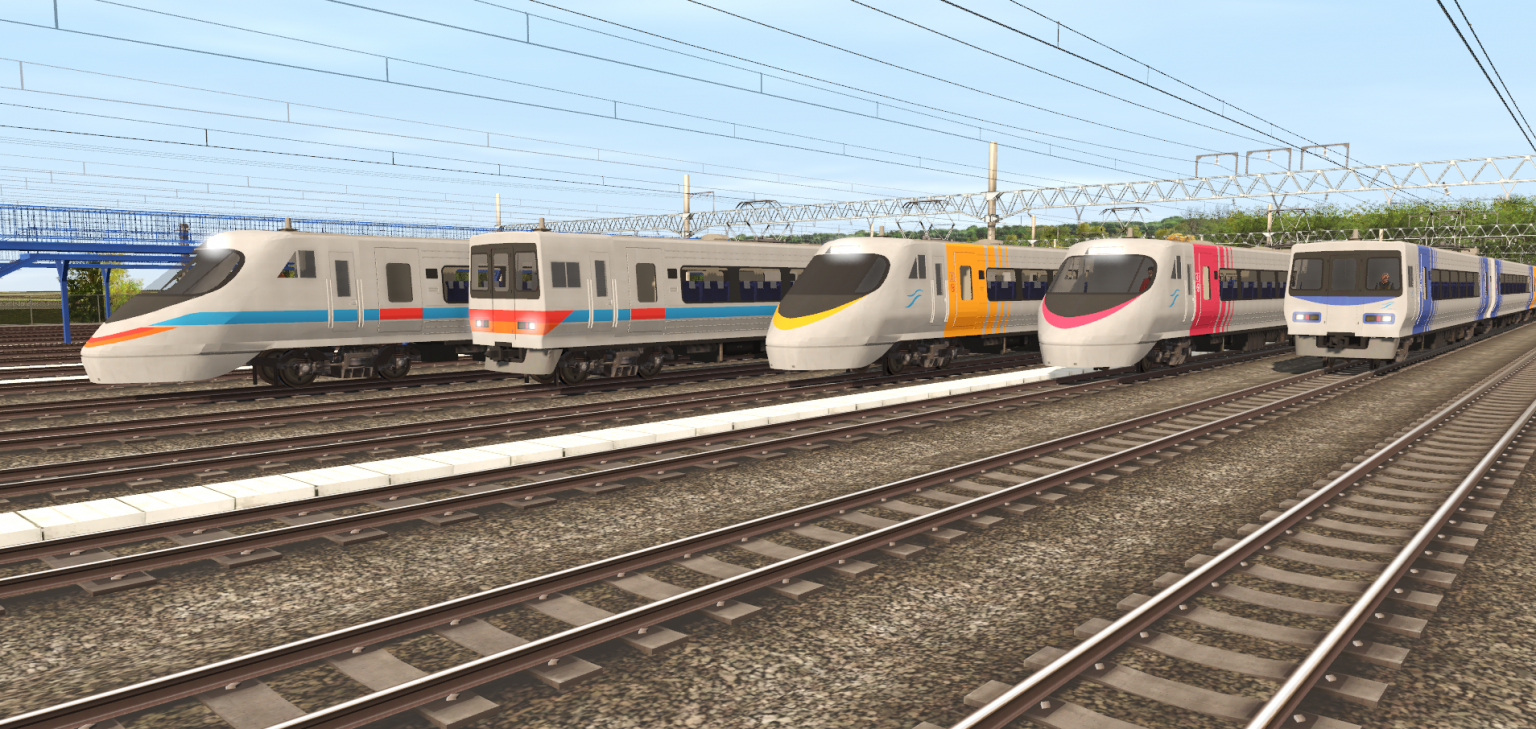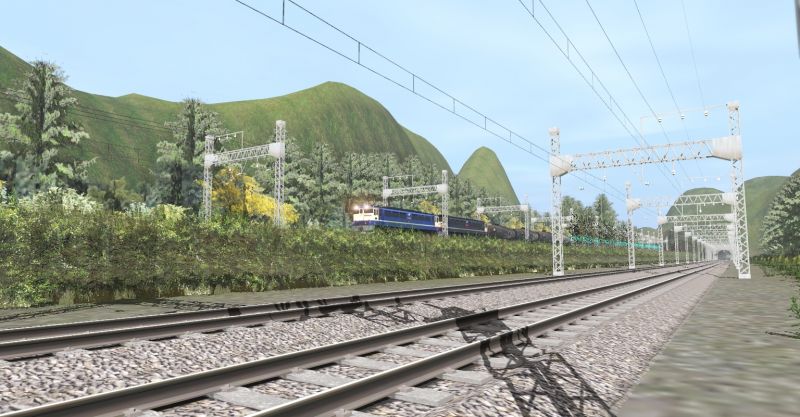[Continues from preceeding post]
Introduced in 2005, Toei's 10-300 Series was derived from JR East's successful above-ground E231 Series design, and was a true step-up from the 10-000 Series. However, it could not be used directly from the start as they came equipped only with D-ATC and not the analogue ATC system, hence, regular services were operated with the 10-000 Series only for a while, with the 10-300 Series being used after revenue hours for testing. The switch to D-ATC came on the 14th of May 2005, with the entrance in service of the first 10-300 Series batches, replacing the older 1st and 2nd batches 10-000 Series (plus the prototype set) wich had not been retrofitted with D-ATC, as by then were nearing nearly 30 years of age. However, not all cars of these sets were nearly 30 years old, with Toei opting to "recylce" the two additional 5th batch intermediate cars added in each set around the late '80s to form a handful of new trains - these being the quirky 6-car 10-300R Sets: six 10-000 Series cars sandwitched between two newly-built 10-300 Series-style cab cars.
The later 10-000 Series batches, from the 4th onwards, were instead relatively more lucky, being retrofitted with D-ATC and thus able to continue revenue service on the Shinjuku Line, with the 4th to 6th batches being also retrofitted with LED destination indicators around 2009.
However, overcrowding soon caught up to them, with Toei planning to extend all Shinjuku Line trains from eight to ten cars. Depsite having been built relatively recently, the 10-000 Series were now fitted with rather outdated equipment, and an eventual reformation into 10-car sets, depsite some tests, was not considered, with Toei opting for an outright replacement with new batches of the 10-300 Series, the first of wich began to be delivered in 2013.
With the delivery of the new 10-300 Series batches, the definitive retirement of the 10-000 Series began, with the retiremet of the 3rd batch trains by the end of 2013, followed in 2016 by the retirement of the 4th batch, and a year later, in 2017, the final "original style" 10-000 Series trains disappeared from the Shinjuku Line, with the 6th batch set being retired on the 16th of July, and the two 7th batch sets being retired on the 7th of June and on the 14th of August.
The two final batch 10-000 Series sets managed to solder on for six months more until they were both retired as well, the first on the 16th of January, and the second on the 11th of February, thus ending a nearly 40-years long career for the 10-000 Series.
Unfortunately, all retired 10-000 Series vehicles have been scrapped, except for the head portion of car 10-230F (a 4th batch train), wich is allegedly preserved inside Keio Heavy Equipment Maintainance (a sbusidiary company of Keio Railway to wich some railways, of wich Toei for the Shinjuku Line fleet, contract out rolling stock maintainance) Kitano plant.
And with this i'll be done for a while with the Toei subway! Some Asakusa Line rolling stock will come as well in the future, but not right after this pack.
Introduced in 2005, Toei's 10-300 Series was derived from JR East's successful above-ground E231 Series design, and was a true step-up from the 10-000 Series. However, it could not be used directly from the start as they came equipped only with D-ATC and not the analogue ATC system, hence, regular services were operated with the 10-000 Series only for a while, with the 10-300 Series being used after revenue hours for testing. The switch to D-ATC came on the 14th of May 2005, with the entrance in service of the first 10-300 Series batches, replacing the older 1st and 2nd batches 10-000 Series (plus the prototype set) wich had not been retrofitted with D-ATC, as by then were nearing nearly 30 years of age. However, not all cars of these sets were nearly 30 years old, with Toei opting to "recylce" the two additional 5th batch intermediate cars added in each set around the late '80s to form a handful of new trains - these being the quirky 6-car 10-300R Sets: six 10-000 Series cars sandwitched between two newly-built 10-300 Series-style cab cars.
The later 10-000 Series batches, from the 4th onwards, were instead relatively more lucky, being retrofitted with D-ATC and thus able to continue revenue service on the Shinjuku Line, with the 4th to 6th batches being also retrofitted with LED destination indicators around 2009.
However, overcrowding soon caught up to them, with Toei planning to extend all Shinjuku Line trains from eight to ten cars. Depsite having been built relatively recently, the 10-000 Series were now fitted with rather outdated equipment, and an eventual reformation into 10-car sets, depsite some tests, was not considered, with Toei opting for an outright replacement with new batches of the 10-300 Series, the first of wich began to be delivered in 2013.
With the delivery of the new 10-300 Series batches, the definitive retirement of the 10-000 Series began, with the retiremet of the 3rd batch trains by the end of 2013, followed in 2016 by the retirement of the 4th batch, and a year later, in 2017, the final "original style" 10-000 Series trains disappeared from the Shinjuku Line, with the 6th batch set being retired on the 16th of July, and the two 7th batch sets being retired on the 7th of June and on the 14th of August.
The two final batch 10-000 Series sets managed to solder on for six months more until they were both retired as well, the first on the 16th of January, and the second on the 11th of February, thus ending a nearly 40-years long career for the 10-000 Series.
Unfortunately, all retired 10-000 Series vehicles have been scrapped, except for the head portion of car 10-230F (a 4th batch train), wich is allegedly preserved inside Keio Heavy Equipment Maintainance (a sbusidiary company of Keio Railway to wich some railways, of wich Toei for the Shinjuku Line fleet, contract out rolling stock maintainance) Kitano plant.
And with this i'll be done for a while with the Toei subway! Some Asakusa Line rolling stock will come as well in the future, but not right after this pack.





















